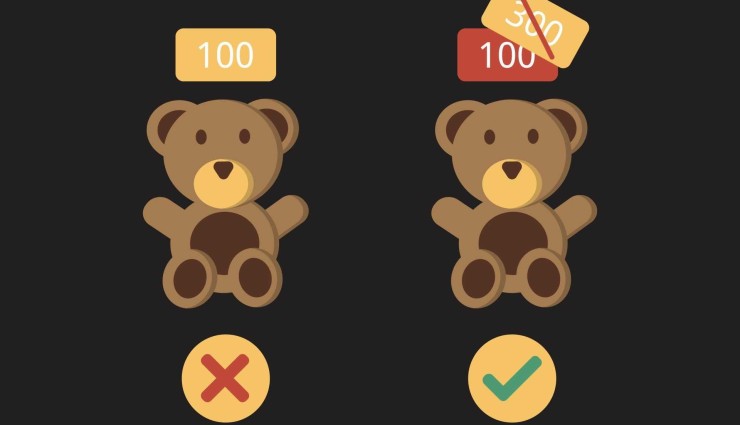Children usually have many demands from their parents, but not all are reasonable, and sometimes we have to say no to them. There are benefits to saying no now and then; By doing this, parents set boundaries and teach children to be disciplined and respect the rules. In this article, we talk about ways to say no to children. Stay with us.
Some strategies for saying no effectively
1. Say no clearly and firmly
When you want to disagree with your child’s request, say no firmly. For example, say, “No, you can’t do that today,” or “No, we’re not going there today.” Being assertive will make your child take your opposition seriously and not try to change your mind.
Sayings like “Okay, let’s see what happens” make the child start begging and crying for your satisfaction and turn “no” into “yes.” Of course, sometimes the situation is such that agreeing or disagreeing with the child’s request depends on other issues. In these cases, you should explain the reason for this uncertainty to the child. For example, you can say: “I don’t know if we are going out. We must wait and see how the weather is in the afternoon.”
When you say no, don’t shout. The child perceives your screaming as if he has the right to do so. You should be calm and firm when saying no to your child.
2. Provide a brief explanation of the reason for your objection
Giving a short explanation of why you say no to a child’s request will help your child learn something or gain experience. For example, suppose instead of saying, “No, you can’t jump in the pool without a life jacket,” you say, “No, you can’t jump in the pool.” In that case, the child will not understand the danger of jumping in the pool without a life jacket and may say in his heart: “Oh, it’s me, Mommy. He is always rude and doesn’t let me have fun.”
The best thing you can say in this situation is, “No, honey, you can’t jump in the pool without a life jacket because you haven’t learned how to swim without a life jacket yet.” When your child knows the reason for saying no to you, he will not insist and be stubborn to get what he wants.
Older children may say, “Why not?” in response to your saying no. Why can’t I do this?” Providing a brief explanation makes it easier for him to understand the reason for your objection and accept it.
3. Deal with your emotions in the right way
Some parents don’t like saying no because they don’t want to mistreat their children and feel guilty for upsetting them. You need to identify how you feel when saying no so that you can deal with yourself and how you think healthily and productively.
Remind yourself that it’s okay for your child to experience negative and uncomfortable emotions such as sadness. Saying no to your child’s requests allows him to deal with his feelings appropriately.
4. Give the child some space
If the child gets upset or starts crying after hearing your objection, don’t push him and give him some space. Allow him to go to the room or place of his choice and deal with this opposition. Take a few deep breaths and calm yourself down.
Decisiveness in dealing with the child
1. Never give up on a child
Never give in, no matter how much your child whines, begs, or cries. If you change your mind quickly, the child will follow the same procedure in the following situations and will never seek to know the reason for your disagreement or respect the rules.
Even hearing statements like “You are so bad. I hate you!” Do not slack off, and do not go back on your word. In response, say, “But I love you, and this is my law.” and end the conversation.
If the child starts talking to you again, say, “I’m done talking about this, and I have nothing more to say.” This is how the child understands that you will not change your mind.
2. Let the child see the consequences of his behavior
If the child ignores you and does his own thing, reprimand him for his behavior. Simply ignoring your objection will make him repeat the same behavior. For example, a child may play with her favorite object and break it despite her opposition. Showing your displeasure lets him know he did something wrong.
Give yourself time to calm down if needed, and don’t yell or hit him out of anger. After you calm down, talk to him. It would be best not to allow him to enter your room or touch your belongings without your permission.
3. State your expectations
Be clear about what you expect from your child, and then praise his progress. For example, if your child has broken one of your personal belongings, tell him, “Darling, I expect you to ask my permission before you touch my personal belongings or enter my room.” or “I expect you to respect my word when I tell you not to do something.”
When you speak clearly to your child, he will understand and try to stick to your rules.
4. Keep calm and control yourself
Reacting violently to your child’s disobedience or protesting him with anger puts you in a vicious circle. If you feel that you are getting nervous and that you might lose control, keep quiet.
If the child is not misbehaving and acting on his curious instinct, try to distract him with something else. For example, if you are in a toy store and don’t want to get a particular toy, you can distract him with another toy.
Create clear rules and limits
1. Communicate your boundaries with your child
Setting limits and rules for the child makes him understand social etiquette and learn the value of “no.” As soon as the child can recognize the difference between “yes” and “no,” explain the boundaries to him.
One of the examples of these rules is eating etiquette. For example, teach him to wash his hands before eating and help set the table.
2. Set limits over time
As the child ages, adjust your limits and rules according to their age. You may need to add new restrictions and regulations, such as curfew or bedtime restrictions. Review the boundaries and rules you set for your child and adjust them to be age-appropriate.
As the child ages, you can talk to him more and share rules and restrictions with him in more detail. Still, say no if necessary, but give him a more complete and logical explanation of why you disagree.
last word
Saying no to all your child’s requests has unpleasant consequences. Children need opportunities to explore different places and try new things. Therefore, allowing your child to do valuable things to develop his creativity is essential.
If you say no a lot, ask yourself, “Why? Are you exhausted? Are you worried that he will sabotage it? While it’s okay to say no occasionally, doing it out of habit has many unpleasant consequences.
you say
Is it challenging for you to say no to your child? How do you treat him in this situation? Please share your valuable comments and experiences with us and our dear users.
Warning! This article is only for educational purposes; to use it, it is necessary to consult a doctor or specialist.



